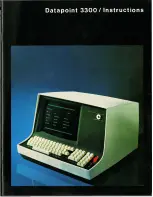
7
The overcurrent protection of the combined
overcurrent and earth-fault protection module
SPCJ 4D29 has two operating stages, a low-set
stage and a high-set stage. The low-set stage may
be given definite time or inverse definite mini-
mum time (IDMT) characteristic, whereas the
high-set stage can be given definite time charac-
teristic only.
The module measures the phase currents of the
feeder to be protected. When one phase current
exceeds the setting value of the low-set overcur-
rent stage, the overcurrent stage starts, simulta-
neously starting the corresponding timing cir-
cuit. When the set operating time has elapsed, a
tripping command is delivered. Correspond-
ingly the high-set overcurrent stage starts when
the relevant setting value is exceeded. It starts its
timing circuit and performs tripping when the
set time has elapsed.
The tripping of the low-set or the high-set
overcurrent protection can be blocked by con-
necting a voltage to one binary input, input
channel 8.
Protection functions
Phase overcurrent
protection
The combined overcurrent and earth-fault pro-
tection module SPCJ 4D29 also includes a two-
stage non-directional earth-fault protection. The
earth-fault protection measures the neutral cur-
rent and operates in the same way as the overcur-
rent protection.
The low-set stage earth-fault protection can be
given definite time or inverse definite minimum
time characteristic, while the high-set earth-
fault stage can be given definite time character-
istic only. The tripping of the earth-fault stages
can be blocked by connecting a voltage to input
channel 8.
Neutral overcurrent
protection
The tripping signal of the feeder terminal is
wired to the OPEN output.The feeder terminal
has four signalling contacts, one of which is the
common internal relay failure (IRF) output.
Three signalling outputs, SIGNAL 1…3, can
be used to indicate the starting or tripping of the
protection, see chapter "Intermodular control
signal exchange".
Contact outputs
of the protection








































